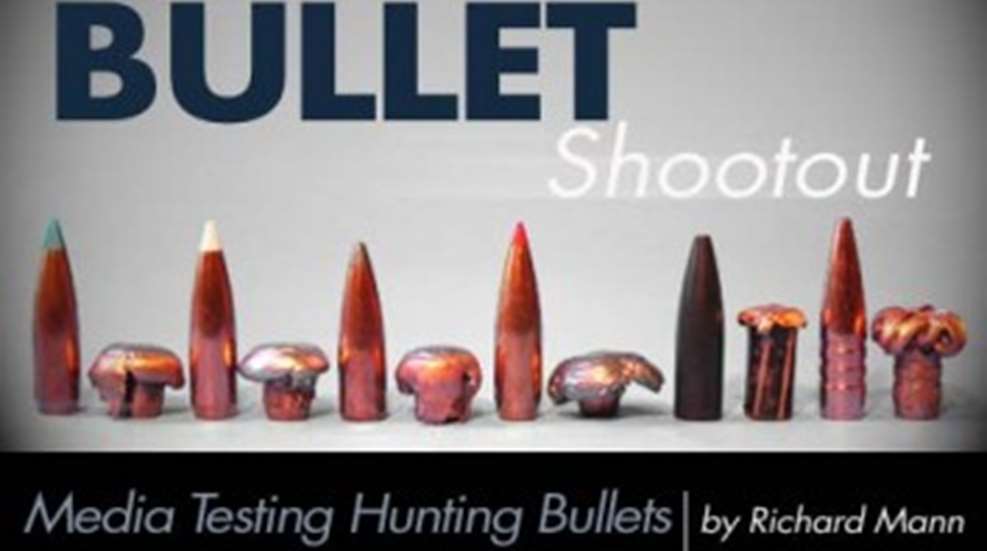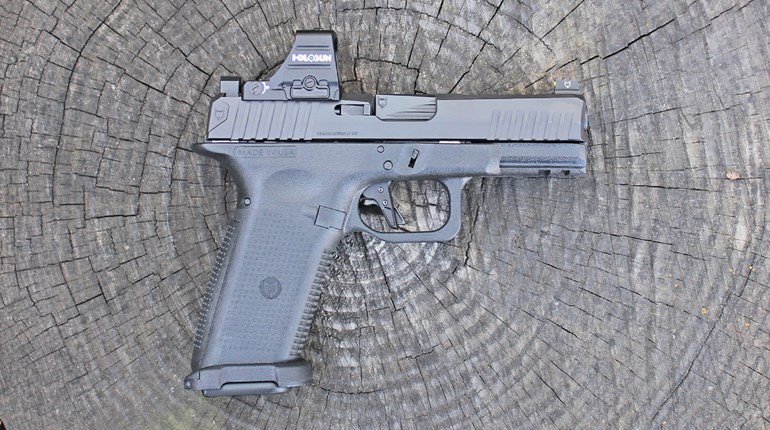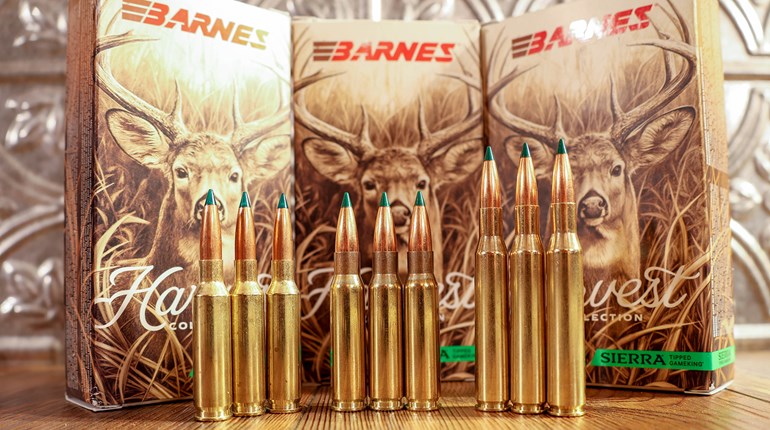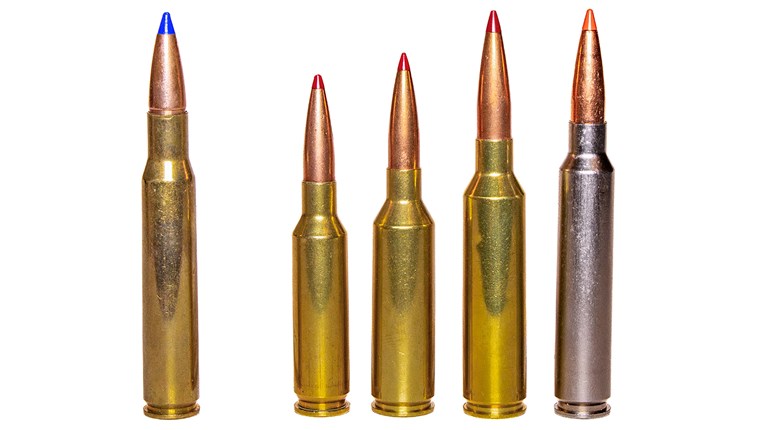
Bullets are all about a balance between expansion, integrity, penetration and tissue destruction. These things are difficult to learn when hunters only shoot a few big-game animals each year. What's more, it's near impossible to orchestrate exact conditions for every shot on game to allow a meaningful comparison.
I have been evaluating a bullet-testing medium from Rooster Laboratories that should be commercially available in 2006. Understand that no test medium can perfectly replicate the hide, bone, muscle and soft tissues a bullet will encounter in animals. But a medium that on a consistent basis illustrates the differences between how bullets expand, penetrate and impart their energy to tissue can teach us many things.
I tested six different 150-grain, .308-caliber hunting bullets. Each was fired into a 12-inch cylinder of medium backed by another 12-inch cylinder. Bullets were handloaded over 46 grains of Ramshot TAC; then fired from a Ruger M77 Compact, .308 Win. with a 16.5-inch barrel to help obtain a target impact velocity of 2,650 feet per second replicating the muzzle velocity of the .300 Savage, 100-yard velocity of a .308 Win. from a standard barrel and the 250-yard velocity of the .300 Win. Mag. Finally, each load was fired for velocity and accuracy from a 21.5-inch barreled Sisk custom .308 Win.
An obvious question is how penetration in this medium correlates to penetration in animals? Ten-percent ordinance gelatin has long been considered by many experts as a reasonable replication of soft animal tissue when it comes to bullet penetration. In fact, 10 percent ordinance gelatin is the medium specified in FBI and Department of Defense testing. The medium I used from Rooster Labs will show approximately half the penetration expected in 10-percent ordinance gelatin.
Expansion occurs almost instantaneously upon bullet impact, but the deformation—like any other work—takes time. Granted, at the speed bullets travel, this time is measured in milliseconds and equates to a very short distance. This distance will differ due to bullet design, and the wound cavity in the test medium provides a snapshot of this distance. This cavity also gives a glimpse of a bullet's propensity for "deep" tissue disruption incidental to what is actually crushed or physically touched by the bullet as it travels through an animal. Wound cavities were measured to include volume in the first cylinder and overall penetration through both.
Sectional density is commonly referred to in any discussion about bullet penetration. It is nothing more than the unfired bullet's weight in pounds divided by the square of its diameter in inches. Sectional density does not reliably predict penetration especially when comparing bullets of different designs. This is perfectly illustrated in this test because the bullets all have the same sectional density, and penetration varied by almost 10 inches. Some also claim retained weight is a good indicator of penetration potential. This is only true when considered in conjunction with expanded diameter. All bullets were recovered from the media, weighed and their expanded diameter was measured.
I found that regardless of caliber, you could determine a bullet's penetration potential (PP) by dividing the recovered weight in grains (RW) by its recovered diameter in inches (RD). Given similar impact velocities the remainder, or penetration potential (PP), will directly correlate to actual penetration (AP). This (PP) might also be called terminal, sectional density. The formula was applied to the recovered bullets in this test and the margin of error with regard to actual penetration (AP) was within +/- 10 percent. The formula was confirmed by testing several other bullets in the medium from calibers as small as .257 to as large as .375, fired at near identical velocities. The reason this formula is important is because it demonstrates how the relationship between weight retention and recovered diameter along with velocity, consistently and reliably determine actual penetration depth.
Calculating Penetration PotentialThe Barnes Triple-Shock had an RW of 150 grains and an RD of .62 inch. Plugged into the penetration potential formula it would look like:
RW/RD = PP or 150/.62 = 241.93
The Triple-Shock penetrated to a depth of 16.0 inches. If you divide the actual penetration (AP) for the Triple-Shock by its PP, which is 241.93, you find its AP of 16.0 inches is 6.6 percent of its PP at a muzzle velocity of 2,635 feet per second.
Experiments like this can reveal trends in bullet performance and help hunters select the most appropriate bullet for the intended purpose. I would encourage hunters to conduct similar experiments to help with bullet selection and to gain an appreciation of how bullets work.
Nosler Ballistic Tip.308, 150-grain, 2680fps
I have used this bullet in calibers from 6 mm to 9.3 mm on whitetails with excellent success. Still, reports from trusted sources tell me Ballistic Tips sometimes come apart and fail to penetrate deep if heavy bone is hit or with impact velocities above 2,900 feet per second. This bullet expands fast even at moderate velocities loosing speed soon after impact. It produced the shallowest wound cavity of any bullet terminating at a depth of6.5 inches. Keep in mind that Nosler (Varmint) Ballistic Tips do not perform like the (Hunting) Ballistic Tips.
Nosler Accubond.308, 150-grain, 2644fps
When I hunted in Africa I used AccuBonds in three different calibers and no bullet failures were experienced. The fact that the core of this bullet is bonded to the jacket allows it to retain its integrity, spread its expansion over a greater distance and maintain a compacted mushroom. This protects against the bullet being torn apart.
Nosler Partition.308, 150-grain, 2663fps
Considered by many, the bullet all others are judged by, Partitions initiate expansion soon after penetration but travel deep before expansion is complete. This aids penetration. However, if the front core is lost too soon due to impact with bone or from tumbling, the remaining rear section can develop into a non-uniform projectile with poor hydrodynamics and veer off course. A Partition did just that on a Montana black bear I shot. When expansion occurs uniformly these bullets penetrate deep. The Partition produced the second largest wound cavity of those tested.Nosler AccubondHere are five Partitions in various calibers. When Partitions expand uniformly like the three on the left they penetrate deep and straight but when they loose the front core early like the two bullets on the right they can deform and veer off course.
Hornady InterBond.308, 150-grain, 2665fps
I used this bullet to take a whitetail buck in 2003. The deer was quartering away and the bullet entered well behind the ribs, passed thru the paunch and one lung, exiting in front of the off side shoulder. These bullets create a large wound cavity, the largest of any bullet tested. They retain weight well and expand to a wide diameter. They will not penetrate as deep as bullets that develop smaller frontal diameters.
Combined Technology Fail Safe.308, 150-grain, 2692fps
This bullet penetrated the deepest of all tested. Bullets that retain a long shank after expansion like the Fail Safe may tumble because they loose stability inside the wound cavity when bone is struck or when petals sheer off. Depending on the remaining velocity and the depth where the tumble occurs, other petals can peel away. The Fail Safe has no frontal lead core thus wound cavities are long, narrow and of less volume.
Barnes Triple-Shock.308, 150-grain, 2635fps
I gave up on X-Bullets because I could never get the accuracy I wanted. The Triple-Shock changed that, and I expect excellent accuracy from them. These bullets expand well, hold together and penetrate deep. Like the Fail Safe, they do not have a frontal lead core and retain a long shank which gets longer as impact velocities drop. This means the Triple-Shock shares some of the Fail Safe's characteristics like a long, narrow wound cavity.






































